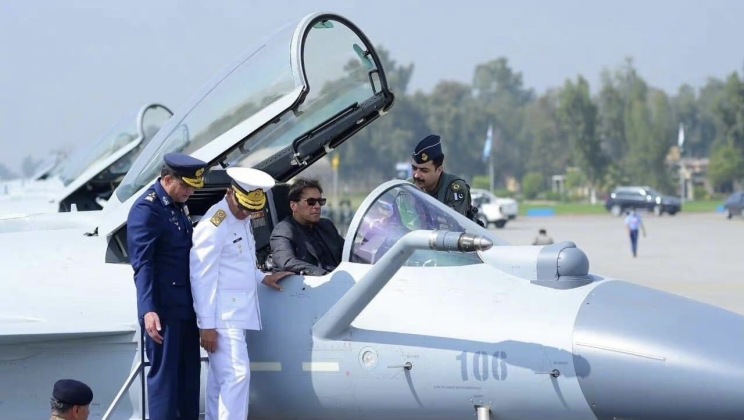On March 11 the Pakistani Air Force inducted its first squadron of J-10C ‘4++ generation’ single engine fighters into service, marking the first time in close to 15 years that the country has commissioned a new fighter class. The event was notably attended by Prime Minister Imran Khan, who examined aircraft number 106 from its cockpit. The sale of the J-10C was confirmed in December 2021 in a statement by Pakistan’s Interior Minister Sheikh Rasheed, who stated that the first unit would be delivered by mid-March, following years of speculation regarding a possible sale. The first aircraft landed in the country on March 4. The J-10C replaces a small unit of 18 F-16C/D Block 52 fighters as the most capable in Pakistani service, and moves the air force past a basic fourth generation level with the first AESA radars, AESA radar guided air to air missiles, reduced radar cross section airframes and state of the art network centric warfare capabilities.
The J-10C is technologically approximately two decades ahead of any other fighter in Pakistan’s fleet, and even if acquired in small numbers effectively revolutionises its aerial warfare capabilities. Aside from its lack of a very low observable airframe, its technologies are considered to be at a fifth generation level and share much in common with the fifth generation J-20 stealth fighter. The number Pakistan intends to purchase remains uncertain, with estimates ranging from 36 to over 100, although the final number will likely depend on the Air Force’s satisfaction with the initial units delivered.

The J-10C is one of a number of new weapons systems Pakistan has acquired in recent years, and serves as a complement to the latest JF-17 variant, the JF-17 Block 3, which is expected to enter service before the end of 2023. The new JF-17 variant has comparable avionics and armaments to the J-10C, but mounts them on a smaller airframe which has a far inferior flight performance but benefits from lower acquisition and operational costs and greater ease of maintenance. It remains uncertain how many J-10C fighters Pakistan plans to acquire, with the JF-17 Block 3 expected to make up the bulk of future acquisitions, but between them they could potentially provide the country with over 150 advanced next generation aircraft over the next eight years. Pakistan has also invested in acquiring the Chinese HQ-9 long range air defence system, the shorter range HQ-16 and its maritime variant the HHQ-16, and Wing Loong II attack drones to provide a more versatile strike capability. These assets are all highly complementary and capable of operating together as part of a larger air defence network. The J-10C is the heaviest and most capable fighter China has ever exported and the most potent fighter the country has yet to offer for export, and has increasingly since 2018 formed the backbone of the Chinese People’s Liberation Army Air Force with approximately 200 currently thought to be in service.
